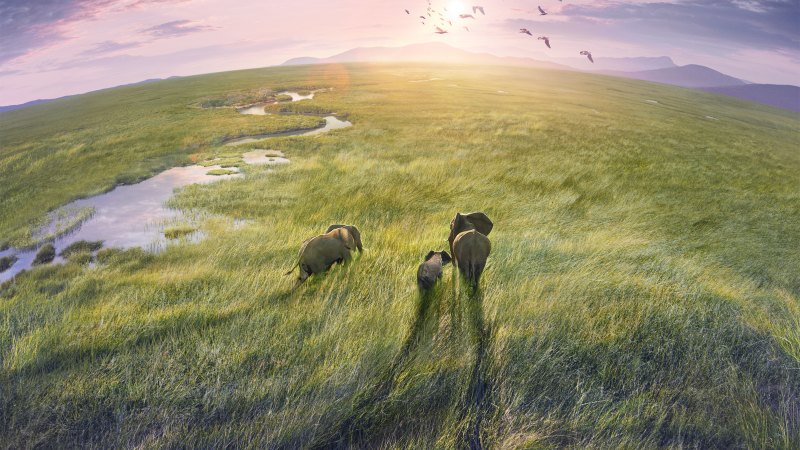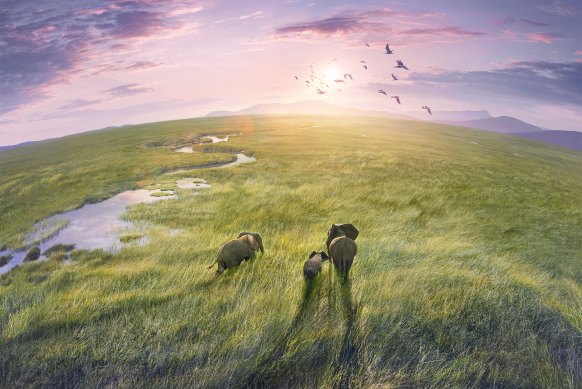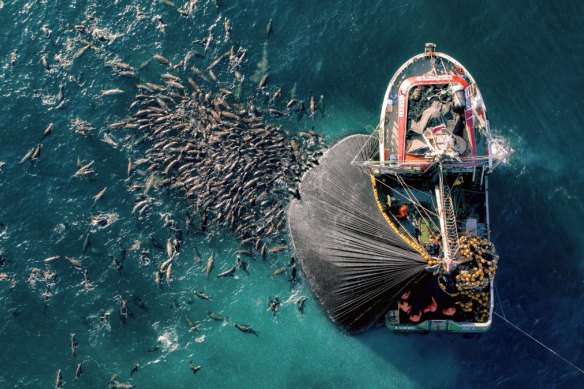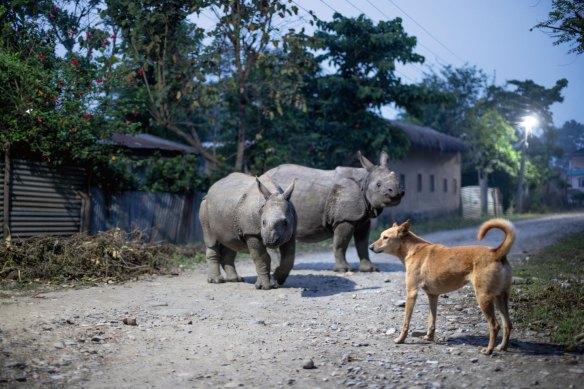Save articles for later
Add articles to your saved list and come back to them any time.
There is no underplaying the power or reach of Sir David Attenborough and his Planet Earth series, not that the BBC would want to. Before the third series began playing on home turf in the UK – and before rolling out on its partner channels in Germany, France and the United States – the corporation set up an immersive display showing how the series and its predecessors were made. As press bashes go this was enormous – but then, Planet Earth is enormous too. Over a billion people have seen the first two series. The first six-episode series – broadcast in 2006 – is said to have cost $US25 million ($A39 million), the most expensive documentary ever made at the time. You can only speculate how much the new series, eight episodes long, five years in the making and shot across 43 countries, must have cost.
Planet Earth III: The third series of David Attenborough’s documentaries was five years in the making.Credit: Nine
Sir David himself is, of course, a megastar. Glass panels of beautifully mounted images took us back to 1952, with photos showing a lean young Attenborough in his khaki shorts, squatting on a beach as a new BBC recruit. He is now 97 and probably the most revered man in Britain. His adventures in the wild – now taken by younger minions, but overlaid for broadcast with the famous voice that is authoritative, emollient and retro-posh all at the same time – have done more than anything else to foster a popular understanding of climate change, habitat destruction and species loss. Not enough to stop these things, obviously – and there are still plenty of online trolls claiming he makes things up in order to destroy Western civilisation – but these are not, largely thanks to him, crank subjects.
The emphasis of the series has shifted accordingly over its two decades. In the first series, says BBC CEO of productions Ralph Lee, the goal was to show scale and spectacle, “the view from God”. The second series in 2016 aimed for the opposite, “getting as close as possible, being on the animal’s shoulder”. The new series leans into the impact humans have had and are having on everything else on the planet. It has been criticised accordingly, but the series’ remarkable cast of animals remains irresistible.
The humans are at their service, as we heard from directors of the individual episodes. Filming a crocodile ambushing deer coming to drink at a waterhole had to be rescheduled 10 times because the slightest movement of pondweed – or the sound of a crew member opening a water bottle – would send the deer running. Matt Brandon, the series director, recalled making six expeditions to Borneo to film female hornbills incarcerating themselves in sealed mud nests. Tiny cameras were placed in three nests. They waited outside, watching the male hornbills feed their mates through tiny portholes. The sequence is astonishing.
Sea lions pursue anchovies in South American waters in David Attenborough’s Planet Earth III. Credit: Nine
This is the series’ other attraction: how it was filmed. Three drones and six cameras were co-ordinated to record the tragic felling of “a mighty kapok tree”. A high-resolution camera was set inside a maned wolf’s den. A military-grade thermal camera was drafted in to film lions hunting seabirds on a beach. Every series, according to the display, has involved cutting-edge tech, whether it was the heli-gimbal (a stabilised mount for a tiny camera) used to film animal migrations from the air in 2006 or the recent invention of a camera that could be attached securely and without discomfort to the head of a migrating Southern right whale. Somewhat frustratingly, the whale was so intrigued by its process that it kept coming back to the boat for another hello, meaning that a lot of its footage was of the crew.
Much of the series was shot during the years of intermittent COVID lockdown. Again, technology that wasn’t around in 2016, let alone 2006, came into play. The directors worked from home in Britain, following the local camera operators through monitors. A sequence on the two-year birthing process of the pearl octopus on the ocean floor in California, where the water pressure is 300 times that of the water on the surface, could only be filmed with an unmanned submarine; the director stayed in Bristol. Not that all the tech was so specialised – one of the most spectacular sequences, showing a remarkably placid rhinoceros strolling down the main street of a town in Nepal, was captured by excited passers-by on their phones.
Planet Earth III.Credit: BBC Studios Fredi Devas
In the absence of Lord Attenborough to promote the show, the BBC marketing people tried to add glamour to their proceedings by bringing in a Hollywood star, Shailene Woodley, as an ambassador. She said she had jumped at the chance to go to Chad – not a recommended tourist destination – and deep into the bush to see how local villagers are protecting elephants from poachers. Her account of looking an elephant in the eye felt much less promotional, ironically enough, than any other aspect of the presentation. “I remember thinking he was choosing to trust us in that moment,” she said. “It felt very conscious and decided and that was something I couldn’t have anticipated, and something that you can’t argue.”
That mix of wonder and earthiness was very much in the spirit of Lord Attenborough, who has always managed to express empathy with animals without descending to anthropomorphism. His core genius, however, is being able to convey a sense of urgency about our threatened environment while telling us gently that it is not too late, that we viewers at home can still save the world. Planet Earth is spectacular without being stupid – ever. Sometimes you can forget what flagship TV is supposed to be like. Here it is.
Planet Earth III premieres on Nine and 9Now on Monday, November 27, at 7.30pm.
Find out the next TV, streaming series and movies to add to your must-sees. Get The Watchlist delivered every Thursday.
Most Viewed in Culture
From our partners
Source: Read Full Article



